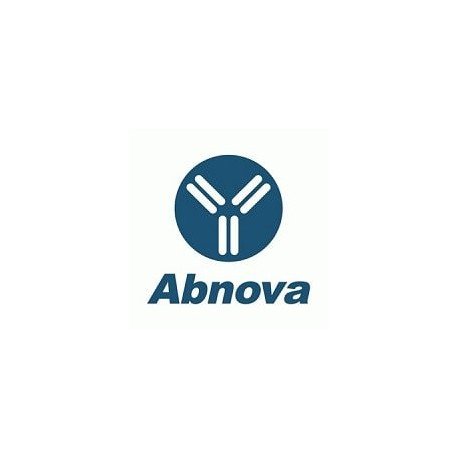Cart 0 Product Products (empty)
No products
To be determined Shipping
0,00 € Total
Prices are tax excluded
Product successfully added to your shopping cart
Quantity
Total
There are 0 items in your cart. There is 1 item in your cart.
Total products (tax excl.)
Total shipping (tax excl.) To be determined
Total (tax excl.)
Data sheet of Angpt2 polyclonal antibody
| Brand | Abnova |
| Product type | Primary antibodies |
| Reactivity | Human,Mouse |
| Host species | Rabbit |
| Applications | WB,IP,ELISA |
More info about Angpt2 polyclonal antibody
| Brand: | Abnova |
| Reference: | PAB10091 |
| Product name: | Angpt2 polyclonal antibody |
| Product description: | Rabbit polyclonal antibody raised against synthetic peptide of Angpt2. |
| Gene id: | 11601 |
| Gene name: | Angpt2 |
| Gene alias: | Agpt2|Ang-2|Ang2 |
| Gene description: | angiopoietin 2 |
| Immunogen: | A synthetic peptide (conjugated with KLH) corresponding to N-terminus of mouse Angpt2. |
| Form: | Liquid |
| Recommend dilutions: | Western Blot (1:500) The optimal working dilution should be determined by the end user. |
| Storage buffer: | In 20 mM KH2PO4, 150 mM NaCl, pH 7.2 (0.1% sodium azide) |
| Storage instruction: | Store at 4°C. For long term storage store at -20°C. Aliquot to avoid repeated freezing and thawing. |
| Quality control testing: | Antibody Reactive Against Synthetic Peptide. |
| Note: | This product contains sodium azide: a POISONOUS AND HAZARDOUS SUBSTANCE which should be handled by trained staff only. |
| Product type: | Primary antibodies |
| Host species: | Rabbit |
| Antigen species / target species: | Mouse |
| Reactivity: | Human,Mouse |
| Application image: |  |
| Application image note: | Immunoblotting of Angpt2 polyclonal antibody (Cat # PAB10091) was used at a 1:500 dilution to detect mouse Angpt2 in supernatants of mouse-angiopoietin-expressing endothelial cells. Lane 1 - mock endothelial cells. Lane 2 - mouse Angptl2 (clone 2-9) expressing cells. Lane 3 - mouse Angpt1 (clone 1-15) expressing cells. Lane 4 - mouse Angpt1 (clone 1-8) expressing cells. Lane 5 - wt endothelial cells. Approximately 20 ug of each lysate was loaded for 10% SDS-PAGE. Immunoprecipitation preceded reaction with primary antibody at room temperature for 1 h. After subsquent washing, a 1 : 5000 dilution of HRP conjugated Gt-a-Rabbit IgG preceded color development. |
| Applications: | WB,IP,ELISA |
| Shipping condition: | Dry Ice |
| Publications: | Isolation of angiopoietin-1, a ligand for the TIE2 receptor, by secretion-trap expression cloning.Davis S, Aldrich TH, Jones PF, Acheson A, Compton DL, Jain V, Ryan TE, Bruno J, Radziejewski C, Maisonpierre PC, Yancopoulos GD. Cell. 1996 Dec 27;87(7):1161-9. |


